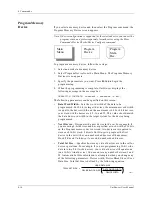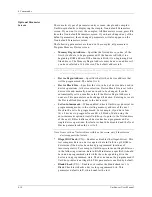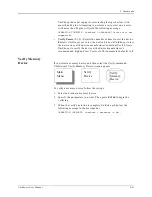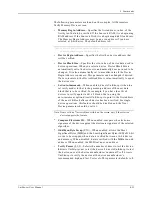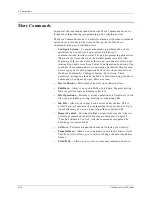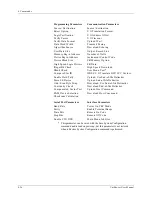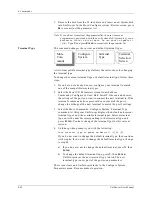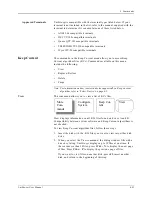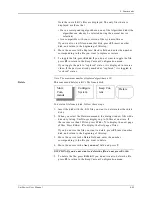
4. Commands
4-30
UniSite-xpi User Manual
•
Illegal Bit Check
(Y,N)—Enables or disables the illegal-bit test. This
test compares data in a device against data in UniSite-xpi’s RAM to
determine if the device has already-programmed locations of
incorrect polarity. For example, UniSite-xpi returns an illegal-bit error
in the following situation: data in RAM indicates a specific bit should
be in an unprogrammed state while the corresponding bit in the
device is in a programmed state. This parameter is enabled by
default.
•
Blank Check
(Y,N)—Enables or disables the blank check test. A
Blank Check test checks a device for programmed bits. This
parameter defaults to Y, which enables the test.
•
Compare Elec ID
(Y,N)—Compares the electronic ID of the device
against the electronic ID of the selected algorithm.
•
Enable Yield Tally
(Y,N)—When enabled, directs UniSite-xpi to keep
a running tally of the programming yields for the last sixteen types of
devices programmed. These totals show how many devices passed
and failed, and what specific errors, if any, have occurred. This
parameter defaults to N, which disables the test. A more complete
description of this feature can be found in the “Yield Tally” section of
this chapter.
•
Erase EE Device
(Y,N)—Bulk erases the electronically erasable
devices before UniSite-xpi attempts to program them.
•
Odd/Even Byte Swap
(Y,N)—When enabled, swaps data at memory
address locations during a load, program, or verify operation. The
contents of user RAM are not altered.
Swapping bytes is useful when manipulating 16- and 32-bit data for a
target system that has a different architecture than the original file
convention. For example, Motorola 16-bit data files store the Most
Significant Bytes (MSB) at even-byte locations, and Motorola 32-bit
data files store the significant bytes in descending order with the MSB
in every first byte (byte 0) and the least significant in every fourth
byte (byte 3). Intel 16-bit data files store the MSB at odd-byte
locations and Intel 32-bit data files store the MSB in ascending order
with the most significant in the fourth byte.
The default for this parameter is N, which means the programmer
maintains its RAM data and file data with the convention that the
MSB of a 16-bit device resides in the odd byte of memory, and the
MSB of a 32-bit word resides in the first of each four bytes of memory.
When set to Y, for a 16-bit device, data is loaded/programmed/
verified into user memory with the MSB at even addresses. For 32-bit
devices, the significant bytes are placed in ascending order with the
MSB placed in user memory in the fourth of each four bytes (the
fourth byte is swapped with the first byte and the third byte is
swapped with the second byte).
•
Continuity Check
(Y,N)—Checks for open device pins before
programming a device. This parameter is enabled by default and
when a new device type is selected.
Summary of Contents for UniSite-xpi
Page 2: ...981 0014 UniSite Programming System User Manual Also Covering Legacy UniSite Programmers ...
Page 72: ...2 Setup and Installation 2 42 UniSite xpi User Manual ...
Page 134: ...3 Getting Started 3 62 UniSite xpi User Manual ...
Page 238: ...5 Computer Remote Control 5 10 UniSite xpi User Manual ...
Page 296: ...6 Translation Formats 6 58 UniSite xpi User Manual ...
Page 402: ...Keep Current Subscription Service 6 Keep Current ...

